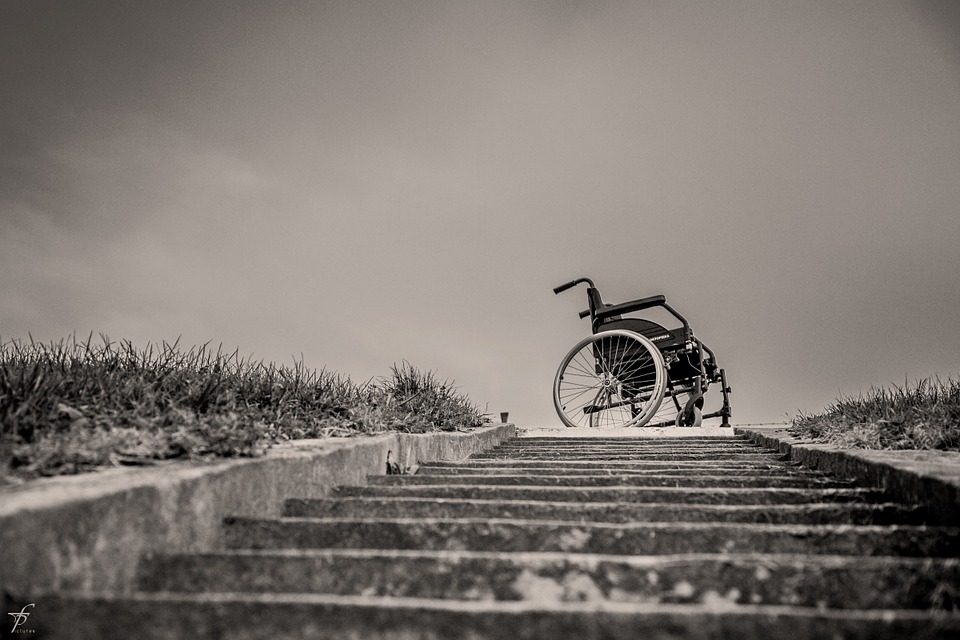
The first thing a good architect has to have is the ability to put themselves in other people’s shoes, to value both the physical and emotional needs of the people who’ll experience a building or space. That’s me, I thought. With a primary career specialty in healthcare design, I saw myself as an incredibly sensitive and empathetic individual and architect. Before engaging on a unique clinical assignment, I often spent nights in facilities, sometimes pretending to be a patient, badly in need of rest, other times shadowing staff to see what challenges they faced and what obstacles were in their way. When it came to folks with disabilities, I figured the ADA and the various accessibility codes told me what they needed, so that part was covered.
Beyond this overinflated self image as an uber-sensitive architect, I also saw myself someone who could defy the clock. I went about meticulously tallying my weekly running logs and planning epic mountainous hikes, oblivious to the fact that I was already half a century into my life. If aging happened to me, it would be graceful. Then eight years ago, during a long solo hike in the mountains, something didn’t feel quite right. Out of the blue, I was diagnosed with a rare degenerative neuromuscular disease. I found myself in a specialty waiting room at Mass General surrounded by people who struggled to walk and talk. I was about to learn real lessons in accommodating human needs that I couldn’t have begun to comprehend before. I felt like I was in a classroom on day one of a course that I was completely unequipped for, and it scared the hell out of me.
Occasionally we do experience sudden epiphanies. That miraculous moment when something clicks in our brain and a previously blurry understanding suddenly comes into focus. Well, I can’t say that happened for me when it came to accessibility. There was no epiphany, no eureka moment where things became clear. It wouldn’t be a crash course in Disability 101. I’d learn these lessons little by little, kind of like learning a foreign language late in life. Simple things came much harder than I could have expected. Over a few years I went from athletic, to clumsy, then to swallowing my pride and getting a walker and finally to needing a wheelchair. Each phase brought new lessons along with the physical and emotional bruises. Early on I subtly looked for street signs or parking meters to hold before I stepped off a curb. When searching for handholds wasn’t enough, I reluctantly bought a rolling walker. I discovered things I never imaged, such as bracing yourself when reaching for a door, knowing that someone bursting through from the other side could be catastrophic. I fought doors like Don Quixote battled windmills. What appeared inconsequential to others became an epic struggle for me.
Wheelchair Lessons
Next came my wheelchair lessons. The first thing I noticed from a wheelchair is that there are two basic types of people: the ones that give you a wide berth, avoiding the slightest eye contact, and the ones that go out of their way to help. Initially I welcomed the first type but once I got my self-consciousness in check, I greatly appreciated the later type. For example, it turns out that most of the things on my grocery list are located on the top shelf. I have a choice, wait for a Good Samaritan or revert to liking Fruit Loops. As much as we all crave total independence, I’ve come to accept that in some circumstances a helping hand is needed and that the interaction can be gratifying to both parties.
Navigating the world from a sitting position is still something I’m learning. It’s not as easy as I had imagined. Obstacles pop up everywhere and I have to admit the old me was blind to 90% of them. As an architect who relied on the ADA and the other accessibility guides, it’s been eye opening to learn what it means to actually use these features, assuming they weren’t overlooked. I stopped being surprised by the omissions, even at large chain hotels and restaurants. Compliant doesn’t mean easy to use. The tension on a door closer rarely is adjusted properly; chest high bathroom counters make it hard to wash hands but easy to soak shirt sleeves; out-swinging toilet doors without closers are almost impossible to close behind you. That 18” “clear space” requirement on the pull side of the bathroom usually seems like a fine place for someone to place a heavy waste paper receptacle. I’ve learned how a mouse feels in a have-a-heart trap.
Sadly most view accessibility as simply a legal minefield, so fearful a misstep could mean a lawsuit that it creates an “us versus them” mindset. That mindset is reinforced when people perceive the demands waste space, cost more, and are aesthetically compromised, that is to say, ugly. I’m guilty of feeling that way both before and after my disability, but I know we can do better with care, creativity and reasoning.
Learning is a lifelong experience and we don’t always get to choose what class we’ll have to take. But we can choose whether we’re going to embrace what we’ve learned and use it. Unlike college calculus, I can see a purpose in what I’m learning, especially as an architect. I’m catching on to what accessibility and inclusive environments are all about. The biggest lesson I’ve learned so far is that we can all do better.
Todd Hanson, AIA leads JSA’s Healthcare Studio. He has been integral in establishing JSA’s reputation for innovative programming, design sensitivity and client service.


